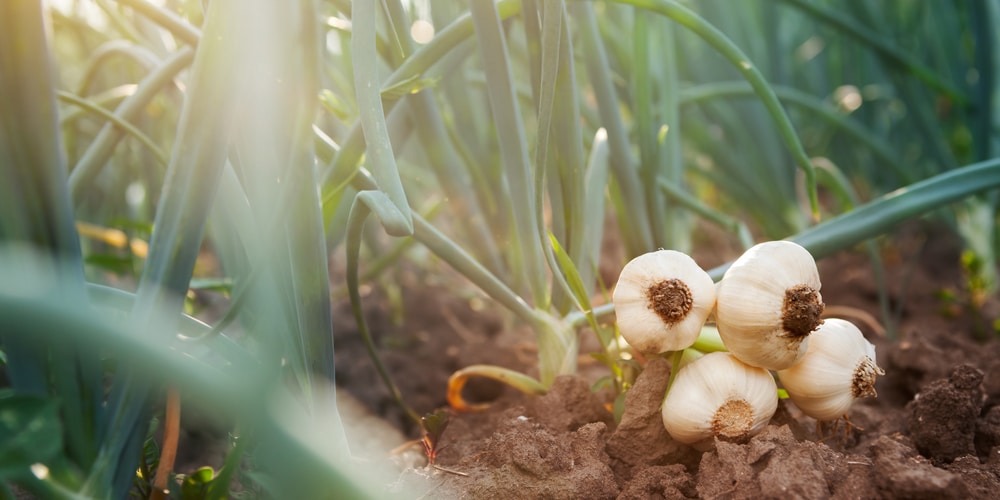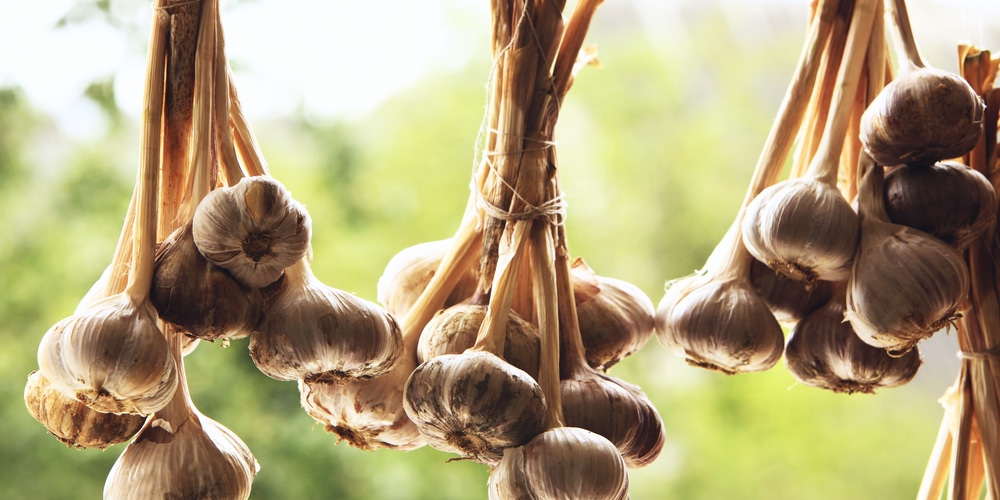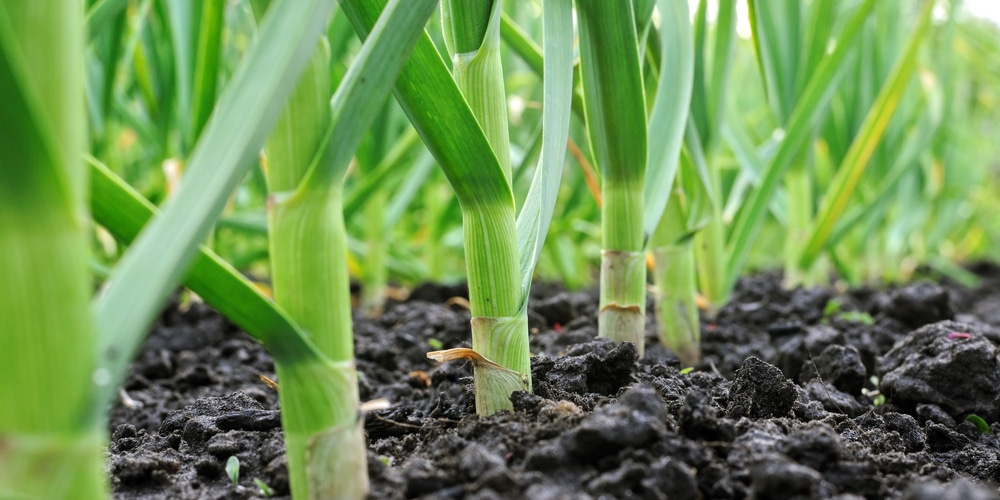Growing a vegetable garden can be a lot of fun. You get to play in the dirt, watch things grow, and eat the fruits (or vegetables) of your labor. But it’s not all rainbows and butterflies. Sometimes, your plants will run into problems. One issue you might encounter is garlic falling over.
Caring for garlic for approximately 240 days until harvest time, only to have your plant flop over onto the ground, can be frustrating. Aside from being unsightly, a garlic plant that’s fallen over is more susceptible to disease and pests. So why does garlic fall over, and what can you do about it?
Garlic Falling Over: What are the Possible Reasons?
Garlic is one of those plants that require a little extra attention. If you don’t provide the right environment, your garlic will start to sprawl on the ground. This can be caused by a few different things:
Poor Location
Garlic needs at least six hours of beautiful sunshine each day. If you live in an area with shorter days or your garlic isn’t getting enough sunlight, this could be the reason why it’s falling over.
Shade from taller plants can also inhibit garlic growth, so make sure to plant it in an area where it won’t be overshadowed.
Inadequate Soil
Garlic also requires well-drained soil that’s high in organic matter. If your soil is too dense, waterlogged, or low in nutrients, your garlic plant will have difficulty getting the support it needs to grow tall and strong.
Too Much Water
While garlic does need consistent moisture, too much water can be just as damaging as not enough. If you’re watering your garlic plants more than once a day or if the soil around the plants is always soggy, this could be the reason why they’re falling over.
Too Little Water
On the other hand, if you’re not watering your garlic plants enough, they’ll start to wilt and fall over. Make sure to give them about an inch of water per week, either from rainfall or irrigation.
Nutrient Deficiency
As mentioned earlier, garlic requires soil that’s high in nutrients. If your soil is lacking in key nutrients like nitrogen, phosphorus, and potassium, your garlic plants will start to show signs of stress, including falling over.
Root zone feeding with a high-quality fertilizer can help to correct nutrient deficiencies and get your garlic plants back on track.
Pests and Diseases
Certain pests and diseases can cause garlic plants to fall over. For example, the fungal disease white rot attacks the roots of garlic plants, causing them to collapse. Similarly, nematodes are tiny parasitic worms that feed on garlic plants, weakening them and making them more susceptible to falling over.
If you suspect your garlic plants are suffering from white rot or nematodes, it’s important to act quickly. These diseases can spread quickly and decimate an entire garlic crop.
Near Harvesting Time
Commonly, garlic plants will start to fall over a few weeks before they’re ready to be harvested. This is because the garlic bulbs are growing larger and heavier, causing the plant to become top-heavy and flop over. Its leaves will start to sag, and the stalks will become thinner and weaker.
This is perfectly normal and nothing to worry about. If your plant is nearing its maturity date, you can simply prop it up with a stake or tomato cage to keep it from falling over.
To check if your garlic is ready to harvest, insert a small knife into the soil next to the plant. If you can feel a large, firm bulb, it’s time to harvest. If not, give it a few more weeks.
How to Prevent Garlic Falling Over
The best way to prevent garlic from falling over is to give it the right environment to grow. This includes planting it in well-drained, nutrient-rich soil and making sure it gets enough sunlight and water.
Remember, six-hour sun exposure is ideal, and garlic plants should be watered about one inch per week. Depending on where you live, you may also need to fertilize your garlic plants a few times during the growing season.
You can also take steps to prevent pests and diseases from attacking your garlic crop. This includes rotating your crops every year, using raised beds, and planting disease-resistant varieties. Some common disease-resistant garlic varieties include ‘Early Italian,’ ‘Inchelium Red,’ and ‘Music.’
For nutrient deficiencies, regular soil testing can help you to identify any areas that need improvement. Check for nitrogen, phosphorus, and potassium levels, as well as pH level and organic matter content. Adding compost or manure to your soil can help to improve its quality and provide the nutrients garlic plants need to thrive.
In short, by taking some simple precautions, you can prevent garlic from falling over and have a healthy, successful crop.
Garlic Falling Over: Final Thoughts
Garlic falling over is a common problem that can usually be fixed by taking a few simple steps. Make sure your garlic plants are getting enough water and sunlight, plant them in nutrient-rich soil, and take measures to prevent pests and diseases.
The key is taking action as soon as you notice any problems. Whether it’s too much moisture, or a nutrient deficiency, addressing the issue early on will help to prevent further damage and keep your garlic plants healthy.
Related Article: When to Plant Garlic Zone 6


